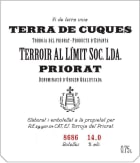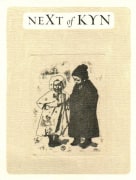Other Red Blends 143 Items

- All Red Wine
- Pinot Noir 560
- Bordeaux Red Blends 461
- Cabernet Sauvignon 414
- Rhône Blends 178
- Nebbiolo 174
- Syrah/Shiraz 172
- Sangiovese 155
- Other Red Blends clear Wine Type filter
- Malbec 85
- Tempranillo 73
- Gamay 71
- Grenache 52
- Cabernet Franc 42
- Zinfandel 41
- Merlot 34
- Tuscan Blends 25
- Barbera 20
- Mencia 17
- Other Red Wine 13
- Mourvedre 10
- Carignan 8
- Carmenere 7
- Nerello Mascalese 7
- Nero d'Avola 6
- Petite Sirah 5
- Sagrantino 5
- Dolcetto 4
- Cinsault 3
- Lagrein 3
- Pinotage 3
- Touriga Nacional 3
- Blaufrankisch 3
- Aglianico 2
- Bonarda 2
- Corvina 2
- Baga 2
- Bobal 2
- Graciano 2
- Xinomavro 2
- Petit Verdot 1
- Alicante Bouschet 1
- Freisa 1
- Grolleau 1
- Pais 1
- Trousseau 1
- Non-Vintage 18
- 2022 8
- 2021 34
- 2020 83
- 2019 117
- 2018 clear Vintage filter
- 2017 159
- 2016 181
- 2015 152
- 2014 117
- 2013 161
- 2012 144
- 2011 100
- 2010 114
- 2009 103
- 2008 95
- 2007 117
- 2006 103
- 2005 72
- 2004 81
- 2003 41
- 2002 28
- 2001 49
- 2000 34
- 1999 40
- 1998 20
- 1997 16
- 1996 5
- 1995 6
- 1994 3
- 1993 3
- 1991 1
- 1990 1
- 1988 2
-
Gift Type Any
-
Occasion Any
-
Variety Any
-
Varietal Other Red Blends
-
Region Any
-
Availability Include Out of Stock
-
Size & Type Any
-
Fine Wine Any
-
Vintage 2018
-
Reviewed By Robert Parker's Wine Advocate
-
Sort By Most Interesting
-
Quinta do Portal Reserva Tinto 2018Other Red Blends from Douro, Portugal
- WE
- WS
- RP
3.8 10 RatingsSold Out - was $36.99Ships today if ordered in next 5 hoursLimit 0 per customerSold in increments of 0 -
Terroir Al Limit Terra de Cuques Rouge 2018Other Red Blends from Priorat, Spain
- JS
- RP
- W&S
4.0 6 RatingsSold Out - was $61.99Ships Wed, Apr 24Limit 0 per customerSold in increments of 0 -
Garage Wine Co. Bagual Vineyard Lot 96 Carignan-Garnacha-Mataro 2018Other Red Blends from Maule Valley, Chile
- RP
- WS
3.5 15 RatingsSold Out - was $39.99Ships today if ordered in next 8 hoursLimit 0 per customerSold in increments of 0 -
Abadia Retuerta Seleccion Especial 2018Other Red Blends from Spain
- JS
- RP
- WS
4.4 8 RatingsSold Out - was $54.99Ships today if ordered in next 6 hoursLimit 0 per customerSold in increments of 0 -
Maquis Lien 2018Other Red Blends from Colchagua Valley, Rapel Valley, Chile
- RP
- WE
- WS
- JS
3.2 6 RatingsSold Out - was $35.99Ships Fri, Apr 26Limit 0 per customerSold in increments of 0 -
Jeff Cohn Cellars Smoke and Mirrors Red Blend 2018Other Red Blends from California
- JD
- WE
- WS
- RP
3.9 28 RatingsSold Out - was $26.99Ships today if ordered in next 5 hoursLimit 0 per customerSold in increments of 0 -
Luigi Bosca De Sangre Red Blend 2018Other Red Blends from Mendoza, Argentina
- JS
- RP
4.3 6 RatingsSold Out - was $25.99Last call - only 0 left!Ships today if ordered in next 5 hoursLimit 0 per customerSold in increments of 0 -
Duorum Reserva Red 2018Other Red Blends from Douro, Portugal
- WE
- RP
0.0 0 RatingsSold Out - was $54.99Ships today if ordered in next 5 hoursLimit 0 per customerSold in increments of 0 -
Venus La Universal Venus Tinto 2018Other Red Blends from Montsant, Spain
- RP
0.0 0 RatingsSold Out - was $45.99Ships today if ordered in next 8 hoursLimit 0 per customerSold in increments of 0 -
Yalumba The Signature Cabernet-Shiraz 2018Other Red Blends from Barossa Valley, Barossa, South Australia, Australia
- JH
- RP
- D
- JS
- WS
4.3 11 RatingsSold Out - was $74.99Ships Fri, Apr 26Limit 0 per customerSold in increments of 0 -
Terroir Al Limit Historic Negre 2018Other Red Blends from Priorat, Spain
- JS
- RP
- W&S
3.5 9 RatingsSold Out - was $36.99Ships Fri, Apr 26Limit 0 per customerSold in increments of 0 -
Mas Doix Salanques 2018Other Red Blends from Priorat, Spain
- RP
0.0 0 RatingsSold Out - was $42.99Ships today if ordered in next 8 hoursLimit 0 per customerSold in increments of 0 -
Matetic Corralillo Winemaker's Blend 2018Other Red Blends from San Antonio Valley (Chile), Chile
- JS
- RP
3.2 11 RatingsSold Out - was $21.99Ships Fri, Apr 26Limit 0 per customerSold in increments of 0 -
Podere Il Castellaccio Valente 2018Other Red Blends from Tuscany, Italy
- JS
- RP
3.8 14 RatingsSold Out - was $25.99Ships today if ordered in next 8 hoursLimit 0 per customerSold in increments of 0 -
Quinta da Corte Princesa 2018Other Red Blends from Douro, Portugal
- WE
- JS
- WS
- RP
0.0 0 RatingsSold Out - was $43.99Ships today if ordered in next 6 hoursLimit 0 per customerSold in increments of 0 -
Niepoort Redoma Tinto 2018Other Red Blends from Douro, Portugal
- RP
0.0 0 RatingsSold Out - was $49.99Ships today if ordered in next 8 hoursLimit 0 per customerSold in increments of 0 -
Tikal Natural Organic Red Blend 2018Other Red Blends from Mendoza, Argentina
- JS
- RP
3.7 32 Ratings2020 Vintage In Stock 26 99Ships Wed, Apr 24Limit 0 per customerSold in increments of 0 -
Poggio al Tesoro Mediterra 2018Other Red Blends from Tuscany, Italy
- RP
4.0 29 RatingsSold Out - was $16.99Ships Fri, Apr 26Limit 0 per customerSold in increments of 0 -
Next of Kyn Touriga Nacional Numero Quatro Cumulus Vineyard (1.5 Liter Magnum) 2018Other Red Blends from Central Coast, California
- JD
- RP
0.0 0 RatingsSold Out - was $965.97Ships today if ordered in next 8 hoursLimit 0 per customerSold in increments of 0 -
Next of Kyn Cumulus Vineyard No. 12 (1.5 Liter Magnum) 2018Other Red Blends from Central Coast, California
- JD
- RP
0.0 0 RatingsSold Out - was $965.97Ships today if ordered in next 8 hoursLimit 0 per customerSold in increments of 0 -
Quinta da Muradella Alanda Tinto 2018Other Red Blends from Monterrei, Spain
- RP
0.0 0 RatingsSold Out - was $53.99Ships Wed, Apr 24Limit 0 per customerSold in increments of 0 -
Badenhorst Family Red Blend 2018Other Red Blends from South Africa
- V
- RP
- WS
3.0 6 RatingsSold Out - was $39.99Ships Fri, Apr 26Limit 0 per customerSold in increments of 0 -
Domaine Serene Grand Cheval 2018Other Red Blends from Oregon
- RP
- JD
0.0 0 RatingsSold Out - was $109.99Ships Wed, Apr 24Limit 0 per customerSold in increments of 0 -
Castello del Terriccio Toscana 2018Other Red Blends from Tuscany, Italy
- RP
- JS
0.0 0 RatingsSold Out - was $104.99Ships Wed, Apr 24Limit 0 per customerSold in increments of 0 -
Quinta da Pellada Tinto 2018Other Red Blends from Dao, Portugal
- RP
0.0 0 RatingsSold Out - was $124.99Ships Wed, Apr 24Limit 0 per customerSold in increments of 0
Browse by Category
Red White Sparkling Rosé Spirits GiftsWith hundreds of red grape varieties to choose from ...
With hundreds of red grape varieties to choose from, winemakers have the freedom to create a virtually endless assortment of blended red wines. In many European regions, strict laws are in place determining the set of varieties that may be used, but in the New World, experimentation is permitted and encouraged resulting in a wide variety of red wine styles. Blending can be utilized to enhance balance or create complexity, lending different layers of flavors and aromas. For example, a red wine blend variety that creates a fruity and full-bodied wine would do well combined with one that is naturally high in acidity and tannins. Sometimes small amounts of a particular variety are added to boost color or aromatics. Blending can take place before or after fermentation, with the latter, more popular option giving more control to the winemaker over the final qualities of the wine.
How to Serve Red Wine
A common piece of advice is to serve red wine at “room temperature,” but this suggestion is imprecise. After all, room temperature in January is likely to be quite different than in August, even considering the possible effect of central heating and air conditioning systems. The proper temperature to aim for is 55° F to 60° F for lighter-bodied reds and 60° F to 65° F for fuller-bodied wines.
How Long Does Red Wine Last?
Once opened and re-corked, a bottle stored in a cool, dark environment (like your fridge) will stay fresh and nicely drinkable for a day or two. There are products available that can extend that period by a couple of days. As for unopened bottles, optimal storage means keeping them on their sides in a moderately humid environment at about 57° F. Red wines stored in this manner will stay good – and possibly improve – for anywhere from one year to multiple decades. Assessing how long to hold on to a bottle is a complicated science. If you are planning long-term storage of your reds, seek the advice of a wine professional.

























